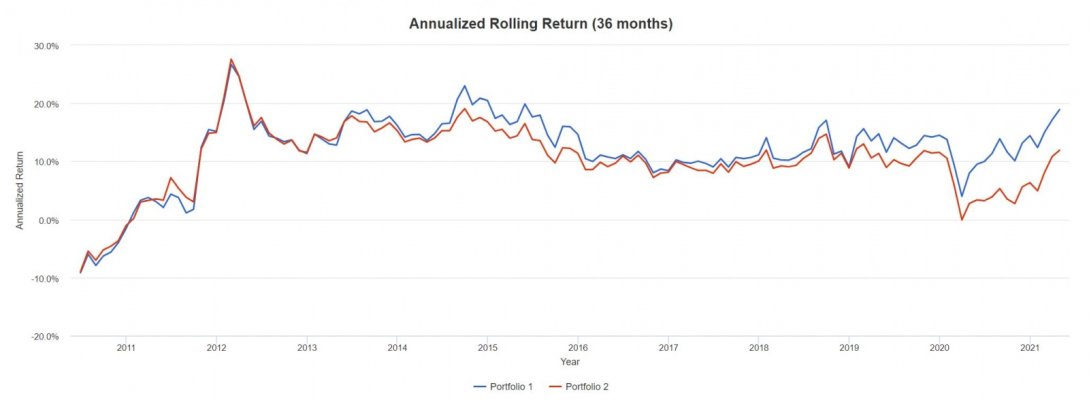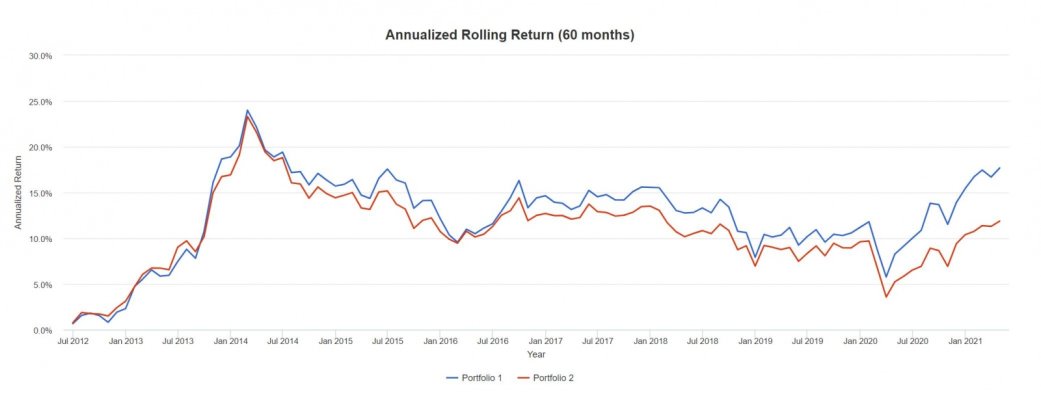Take that same link and change the start year to 2009. You can create what ever answer you want.
I personally don't think Bonds or the NASDAQ are going to perform nearly as well over then next 10 years as they have over the last 10 years.
But I don't think I'm taking a big risk either way.
Uh, 2009 would miss the first half of the Great Financial Crisis, so is a peculiar choice. My numbers used the full range of the VYM data and it happily caught both a bad fall in 08-09 and a large bull market since. However, I love to learn and thought maybe you'd done an analysis, so I went and looked.
From the start of 2009, the same 93% VTI/7% bond has smaller drawdown to the bottom of the GFC (-20% vs -25% for VYM) and 93% VTI also much better performance since, with higher ending balances and higher Sharpe and Sortino ratios than VYM. So for your hand picked start date, I found exactly the same thing as before - dividend stocks did not protect on the downside and did not keep up on the upswing.
I do not understand your portfolio recommendation. If you are advocating for reducing bond percentages because you get income from dividends, the data refutes that idea. Dividend stocks fall like other stocks in downturns so are way riskier than bonds. Look elsewhere for shelter in a storm.
If you are you advocating dividend stocks to replace the stock portion of your portfolio, that would be an odd expectation. I'm not real up on literature, but I don't think factor based research identified dividends as a factor that could be added to enhance total return.
In any case, I'll do me and you do you.



